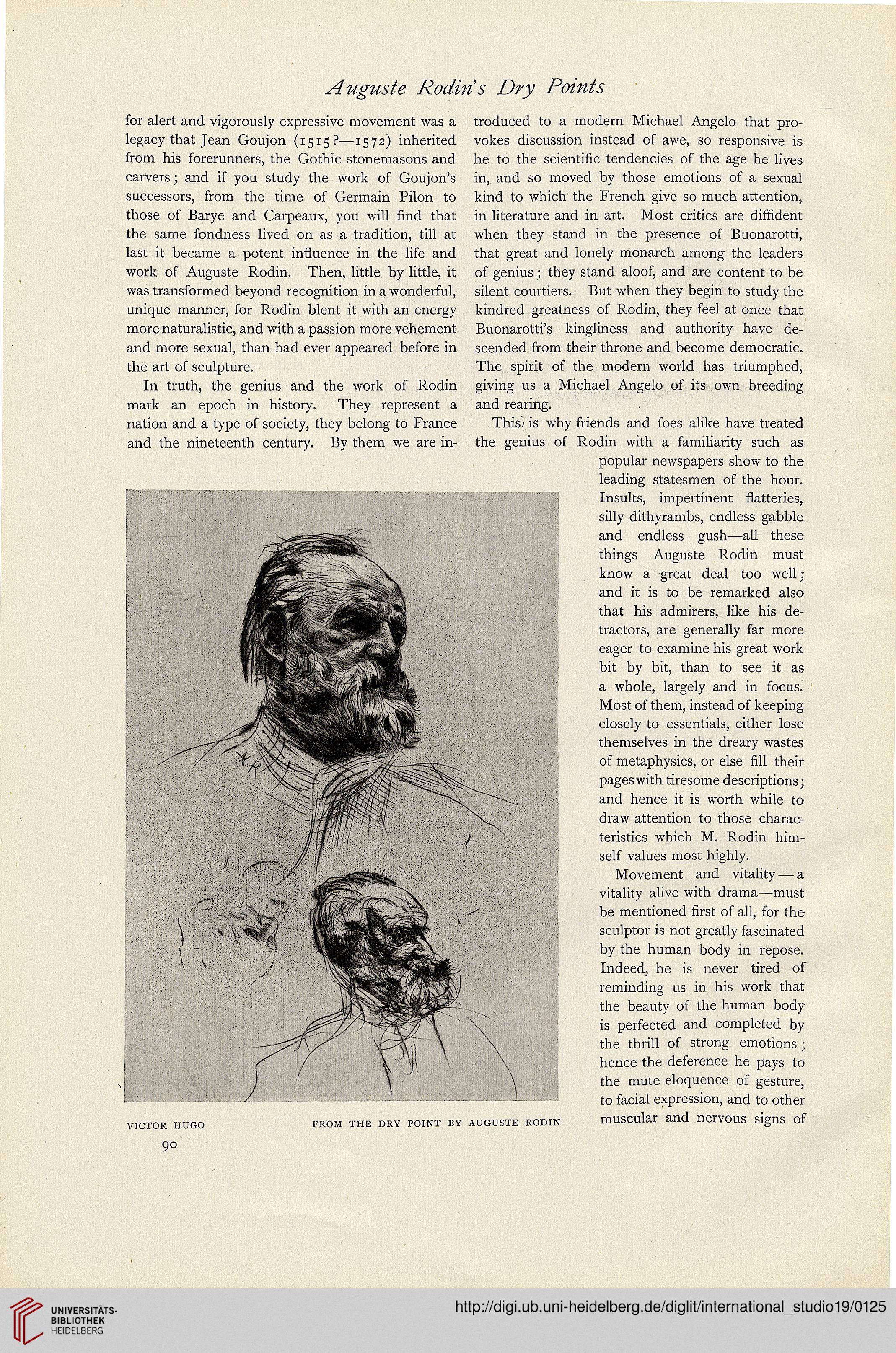for alert and vigorously expressive movement was a
legacy thatjean Goujon (igig?—1572) inherited
from his forerunners, the Gothic stonemasons and
carvers; and if you study the work of Goujon's
successors, from the time of Germain Pilon to
those of Barye and Carpeaux, you will hnd that
the same fondness iived on as a tradition, till at
last it became a potent induence in the life and
work of Auguste Rodin. Then, iittie by little, it
was transformed beyond recognition in a wonderful,
unique manner, for Rodin blent it with an energy
more naturalistic, and with a passion more vehement
and more sexual, than had ever appeared before in
the art of sculpture.
In truth, the genius and the work of Rodin
mark an epoch in history. They represent a
nation and a type of society, they belong to France
and the nineteenth century. By them we are in-
troduced to a modern Michael Angelo that pro-
vokes discussion instead of awe, so responsive is
he to the scientific tendencies of the age he lives
in, and so moved by those emotions of a sexual
kind to which the French give so much attention,
in literature and in art. Most critics are diffident
when they stand in the presence of Buonarotti,
that great and lonely monarch among the leaders
of genius; they stand aloof, and are content to be
silent courtiers. But when they begin to study the
kindred greatness of Rodin, they feel at once that
Buonarotti's kingliness and authority have de-
scended from their throne and become democratic.
The spirit of the modern world has triumphed,
giving us a Michael Angelo of its own breeding
and rearing.
This.' is why friends and foes alike have treated
the genius of Rodin with a familiarity such as
popular newspapers show to the
leading statesmen of the hour.
Insults, impertinent Hatteries,
silly dithyrambs, endless gabble
and endless gush—all these
things Auguste Rodin must
know a great deal too well;
and it is to be remarked also
that his admirers, like his de-
tractors, are generally far more
eager to examine his great work
bit by bit, than to see it as
a whole, largely and in focus.
Most of them, instead of keeping
closely to essentials, either lose
themselves in the dreary wastes
of metaphysics, or else fHI their
pageswith tiresome descriptions;
and hence it is worth while to
draw attention to those charac-
teristics which M. Rodin him-
self values most highly.
Movement and vitality — a
vitality alive with drama—must
be mentioned first of all, for the
sculptor is not greatly fascinated
by the human body in repose.
Indeed, he is never tired of
reminding us in his work that
the beauty of the human body
is perfected and completed by
the thrill of strong emotions;
hence the deference he pays to
the mute eloquence of gesture,
to facial expression, and to other
muscular and nervous signs of




